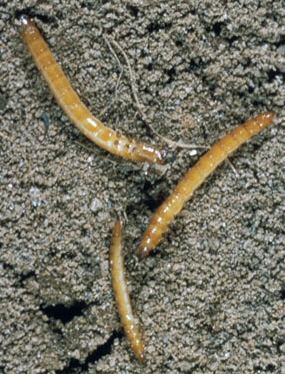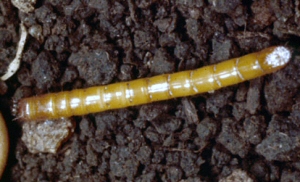Wireworms
 Hosts
Hosts
A variety of vegetable and field crops.
Symptoms
Crops that are attacked by wireworms often fail to germinate because the insects eat the germ of the seed, leaving only the hollowed-out seed coat. In infested fields, a crop may not come up well or it may start well and later become thin and sparse because the larvae continue to bore into the underground parts of the stem causing the plant to wither and die. Later in the season, the wireworms continue to feed upon the small roots of many plants. Wireworm injury is most severe to crops planted on sodground or in a second-year sod, usually because the wireworms coming from sod fields have extended life histories.
 Description
Description
Adults are commonly called click beetles, 1/4 to 1 inch long, usually brown to black, and the body tapers to a point at the posterior end. Larvae, the injurious stage, are wirelike, cylindrical, clearly segmented, and yellow and brown. Their length varies from 1/4 to over 1 inch long when mature, depending on the species.
Control
Please contact your local county extension office for current information.


